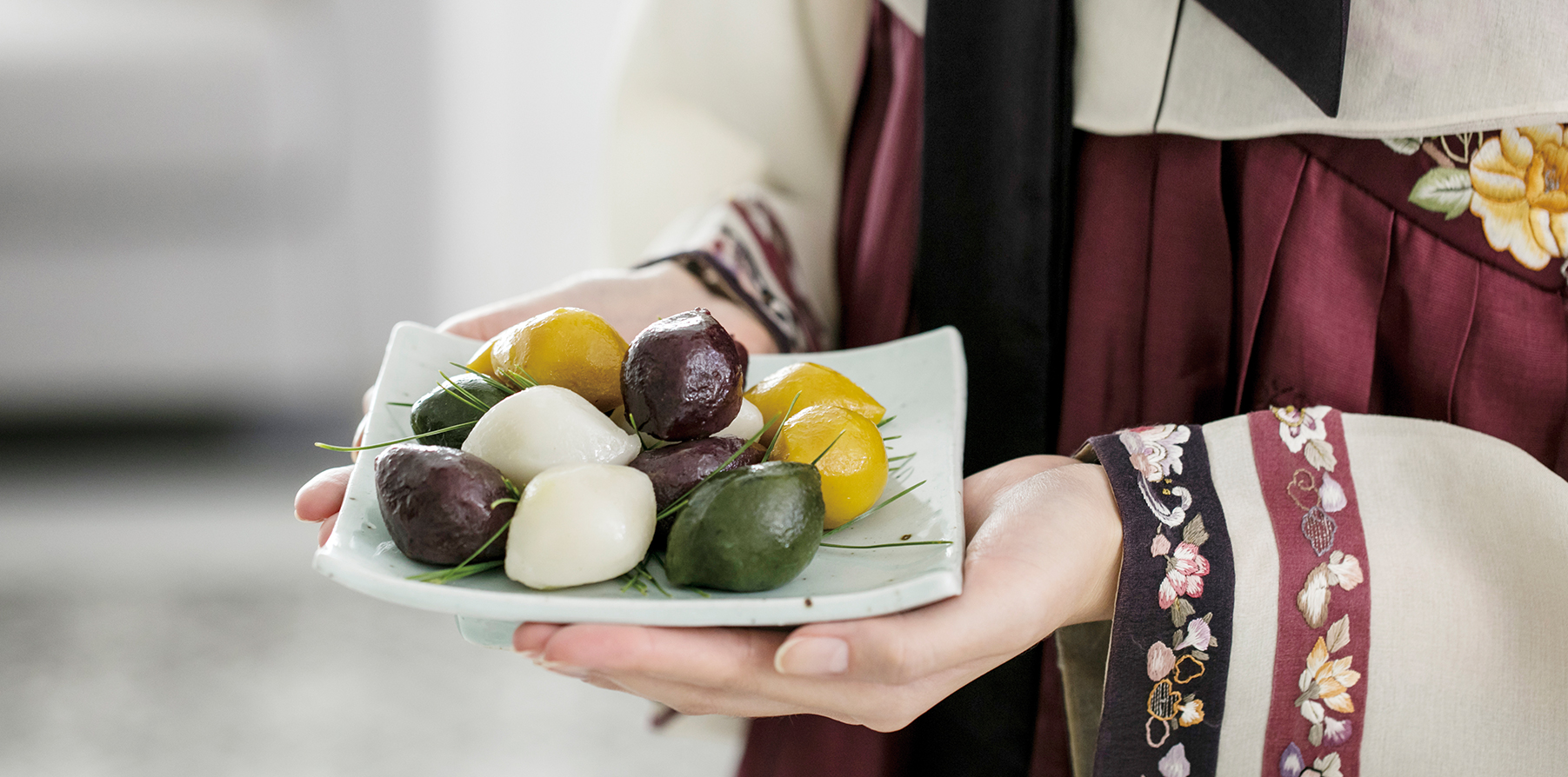Culture Vulture
Korean-style Sharing
Chuseok
Would it be correct to say Koreans love to share? Perhaps it might be more correct to say sharing is so deeply ingrained in the nation’s culture and history that it has grown instinctual for Koreans. During Chuseok, Korea’s version of Thanksgiving and one of the country’s two biggest holidays, that instinct goes into overdrive.
Written by • Tim Alper
If you happen to be in Korea at this time of the year, consider yourself lucky. Chuseok, the festival of the Harvest Moon, is one of the most glorious times of the year on the Korean Peninsula.
The weather is at its most clement. The tropical heat of summer is gone. The days are warm, the nights cool and crisp. If exercise is your thing, you can hike, cycle or run through the early autumn foliage of Korea’s mountains or their foothills in the early morning sun. Few things are more enjoyable or soothing or bring you closer to nature.
But there is a feeling even greater than that of becoming one with nature: oneness with fellow humans. Chuseok, if nothing else, is a celebration of exactly that. The virtues of this holiday are myriad, but perhaps the greatest among them is sharing. And Korea’s version of Thanksgiving is just one of many occasions through which the nation’s spirit makes its presence felt.
Generous Gifts
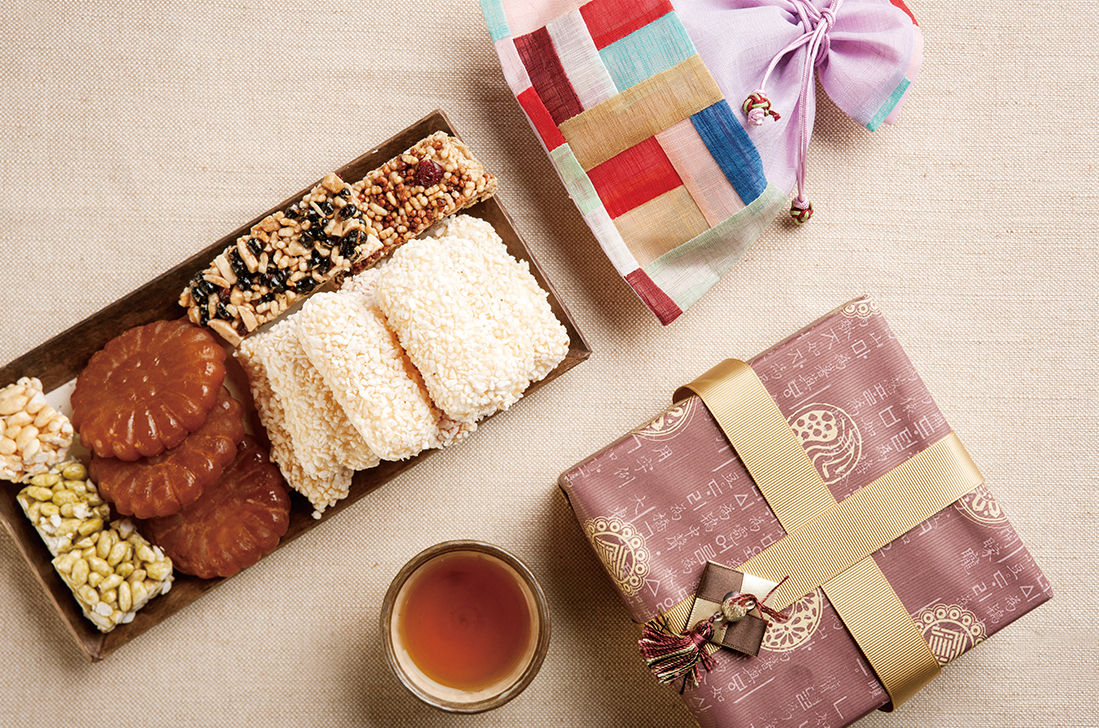
Business dealings close to the Chuseok season often see formal gift exchanges. © imagetoday
Harvests are synonymous with sharing the world over.
I hail from the U.K., where we also have Harvest Festival. Though far more low key than Chuseok (which is closer in scale to Western holidays like Christmas), ours typically involves children and their families bringing tins and packets of food to schools and religious centers, who then redistribute the donated items to the needy.
In Korea, this sort of drive also takes place in the run-up to Chuseok, when major companies often ask their staff to visit the elderly and poor families to distribute sacks of rice.
Chuseok is a family celebration, but when Koreans hear of a friend or close colleague spending the holiday alone, they will often deliver to them some of the delicacies they prepare for the occasion. For instance, a coworker of mine who lived more than 20 km away traveled all the way to my house during the Chuseok vacation to offer me food that his mother had cooked for their family. It was a most heartwarming gesture.
Oftentimes, workers return to the office from the three-day holiday laden with leftover food to share with their colleagues.
Though Chuseok is the time of year when sharing is most prevalent in Korea, it is only the tip of the iceberg. For those lucky enough to be around in November, another prominent display of sharing awaits: gimjang (kimchi production).
Most families traditionally make kimchi once a year at the crossroads of fall and winter. But when they do so, the process usually means making a year’s supply of kimchi with up to a dozen family members and tens of heads of Korean cabbage.
Post-gimjang donations of homemade kimchi to friends, neighbors and close acquaintances are also common. At this time of year, the air is infused with the smell of fermenting vegetables being transported on buses and trains and through streets in an effort to share, share and share alike some more.
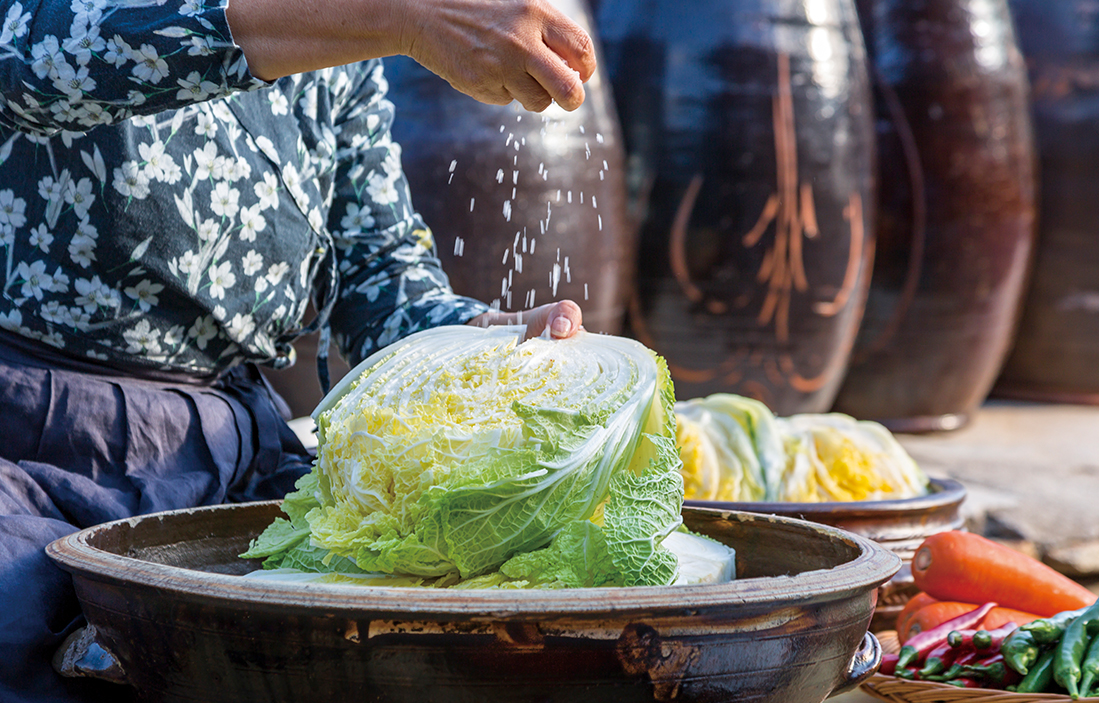
Gimjang (kimchi-making) season is held in fall usually after the Chuseok (Korean Thanksgiving) holidays. As one of the country's two major holidays in addition to Seollal (Lunar New Year), this occasion means family gatherings and large feasts. © imagetoday
Time-honored Tradition
To understand what drives Korea’s instinct for sharing requires a look at history. Modernday Korea is one of the most affluent and technologically advanced countries on Earth. Korean society is also full of money—rich, time—poor people who work - and play - hard to build some of the richest companies on the planet.
But things were not always like this. Just a few decades ago, Korea was one of the poorest countries in the world. And while modern Korea is now a hive of industry, the country until the early 20th century was a distinctly agricultural society. Folks often lived their whole lives in small villages and farming communities.
The nation’s topography played a part in making these communities exceptionally close-knit. The mountainous Korean Peninsula with its tall peaks meant that many villages were hard to access. As such, commerce did not flow as freely as elsewhere in the world, and folks were not particularly mobile. Wandering traders and entertainers were rare, and casual visitors even rarer.
Community spirit was not a nicety in these villages but a survival mechanism. Alone, a single villager was vulnerable, but as part of a village community, he or she grew resilient, strong and able to thrive no matter what.
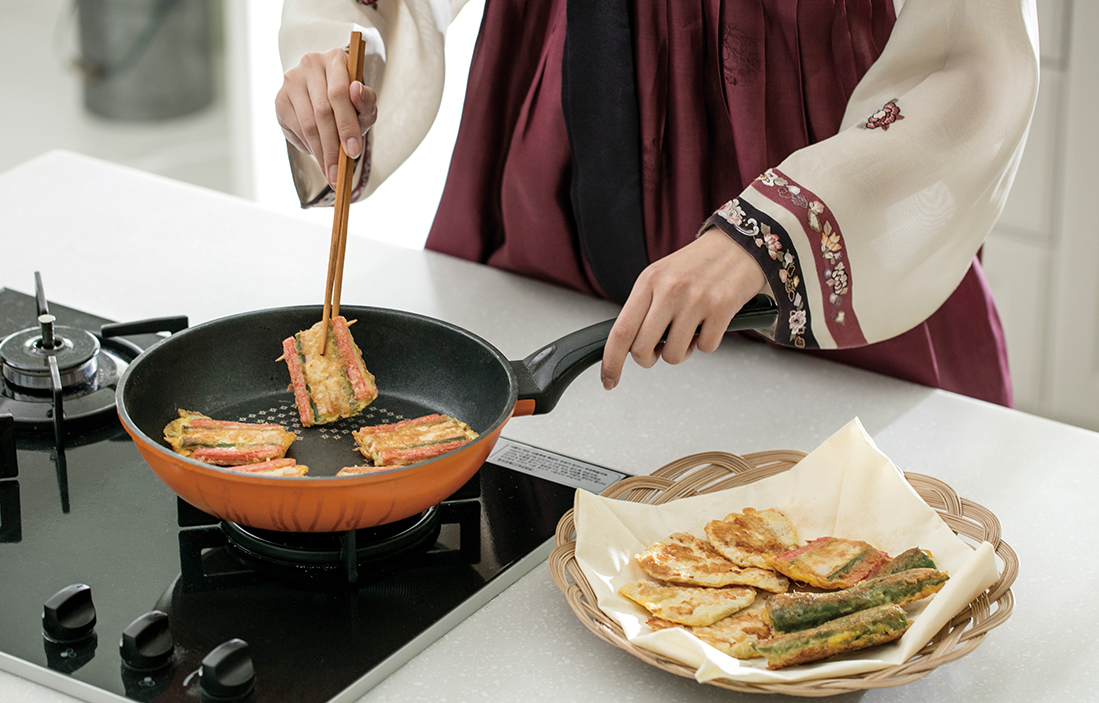
Jeon, a pancake usually made with veggies and meat, is a common side dish placed on a holiday bapsang (a table with a rice-based meal).© imagetoday
Dining Scenes
Sharing was the key to everything, and a simple comparison of Korean and Western dining tables explains this.
Typically, a table at the home of a traditional agricultural family in England was large enough to accommodate all of the household’s residents. There was also enough room (and maybe some spare chairs) for guests like extended family, neighbors or even the neighborhood vicar.
Traditional Korean dining tables are small, low and portable. Even today, families often have up to ten of these tables, and more modern pieces have foldable legs for easier storage. As Koreans typically ate seated on the floor, squeezing a few extra guests in at the dinner table was easy. When more people came, out would come more of these small tables, thus a dozen or so guests could easily be accommodated in this fashion with relative ease.
As such, eating was fluid. A farmworker might eat at home at lunchtime, but at a neighbor’s in the evening.
What little people had, they shared with the community. A guest was never turned away. Cooks often made banchan (condiments accompanying the main staple of rice) in vast batches with neighbors. Or if they made their own supplies, they would surely share, knowing full well that when the family next door made food, they also would receive a portion.
Eating alone was unheard of. Everything was shared, eaten from communal dishes, and made available to one and all.
The Korean village system has long gone but this ethos persists.
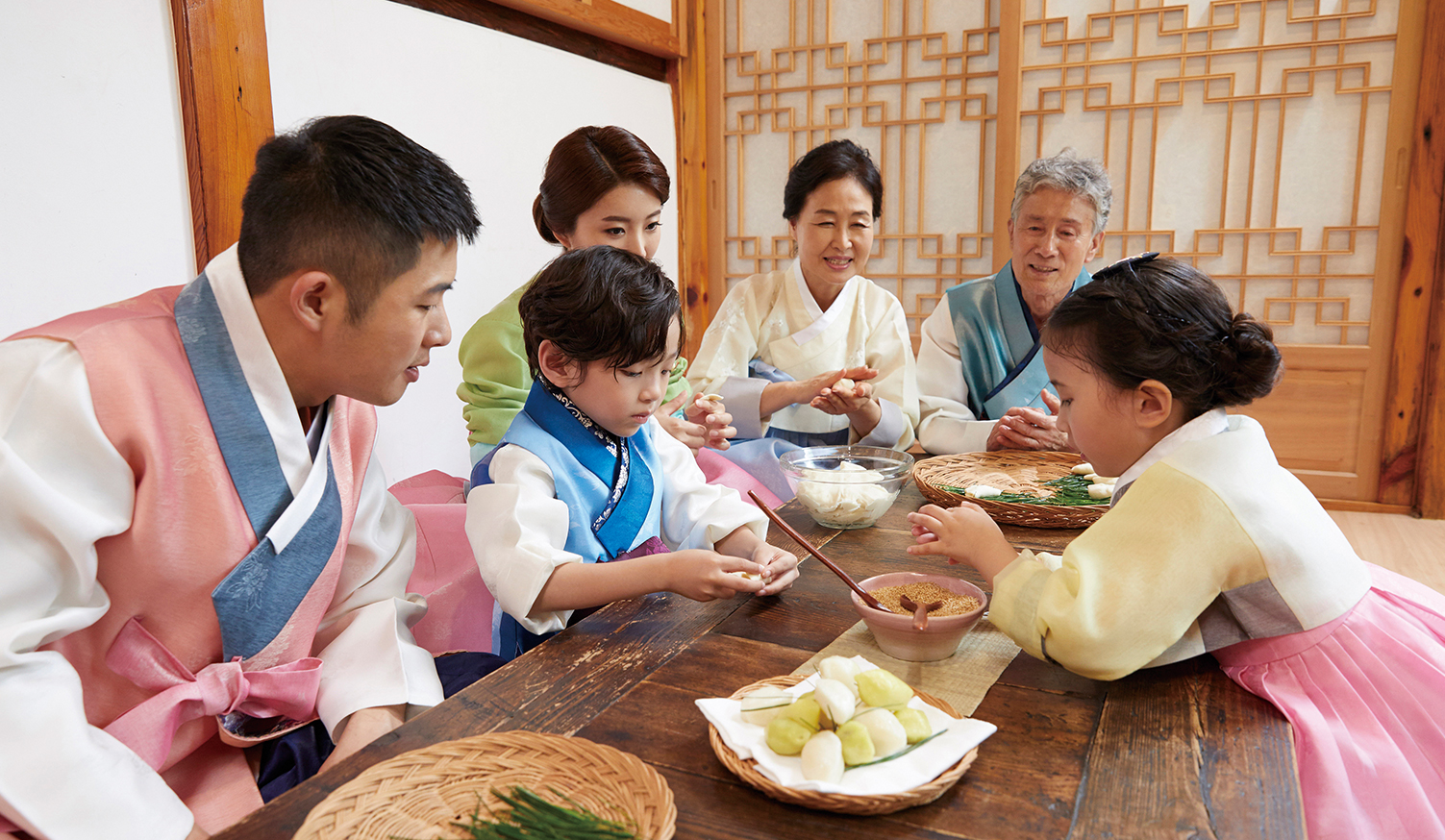
Clad in Hanbok, relatives gather around a table to make the traditional Chuseok favorite tteok (rice cake).© pixta
Modern-day Sharing
Even at Korean offices today, eating a snack at one’s cubicle or desk without offering to share it with colleagues remains a major faux pas.
Big celebratory occasions like a wedding or child birth involve food and gifts. So here, too, Koreans instinctively feel the urge to share, giving out tteok (sweet rice cakes) to up to hundreds of coworkers and neighbors.
To celebrate a promotion at work, Koreans often buy food for colleagues. Even buying a box of fruit for one’s family often means giving a few pieces to the family next door.
Chuseok is a great time to see Korean sharing on full show. Yet the longer you stay in Korea, the more you realize that this custom is a national trait, a spirit that permeates every single aspect of life.

